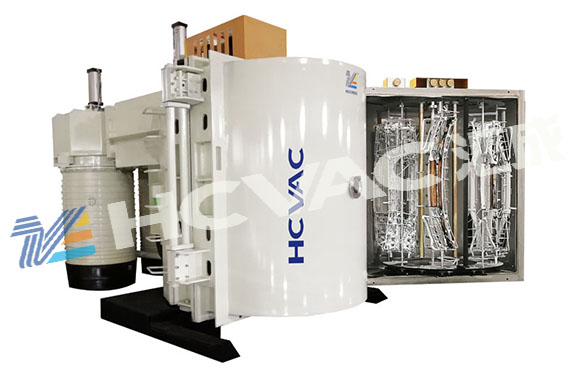Vacuum coating machine is generally composed of vacuum system, evaporation system, film winding system, cooling system, control system and other main parts. When the running speed of the film reaches a certain value, the baffle is opened to deposit and cool the gaseous aluminum particles on the surface of the moving film substrate to form a continuous and bright metal aluminum layer. The thickness of the aluminized layer is controlled by controlling the evaporation speed of metal aluminum and the moving speed of the substrate film. Generally, the thickness of the aluminized layer is 250-500.

The evaporative vacuum coating machine is a special equipment for evaporating aluminum, chromium and silicon monoxide on the surface of plastic. Coating equipment belongs to clean production equipment with no three wastes and no pollution, and does not need approval from the environmental protection department. Divided into vertical and horizontal. Evaporation vacuum coating equipment has fast film formation rate, firm film layer, bright color, and film layer is not easy to be polluted. It can obtain a film layer with good compactness, high purity and uniform film thickness. pollution, it is an ideal equipment for mass production. Ion vacuum coating machine is an advanced special equipment for surface coating PVD film in the world today. It uses PLC and touch screen to realize automatic logic program control operation.
Detailed analysis of changes in plastic coating process
More and more plastic materials are used, and most of them are used in building materials. Industrialized products have spawned more
vacuum coating machine. Although plastic can replace metal in many occasions, it obviously lacks the texture of metal. For this reason, it is necessary to use certain The method is to coat a layer of metal on the surface of the plastic. One method is to use methods similar to chemical plating and electroplating, and the other is to directly spray metal on the plastic surface - that is, in a vacuum state, after the metal is melted, Metal films are deposited on the surface of plastics in the form of molecules or atoms.
Vacuum sprayed metal needs good cooperation with the plastic surface primer. The thickness of the primer is usually 10-20 μm. The main function is to prevent the discharge of water, organic solvents, plasticizers, etc. It is required that the coating has high hardness, the primer has the ability to modify plastic defects, can provide a smooth and flat surface to facilitate the performance of vacuum plating, and is firmly attached to the plastic substrate and the metal to be plated. Usually two-component room temperature curing polyurethane and epoxy coatings, low temperature baking amino coatings and thermoplastic acrylate coatings are used.
The metal coating is easy to oxidize and darken in the air, and there are also defects such as subtle vacuum, so a layer of 5-10μm protective topcoat should be applied. Usually, acrylic varnish can be used. When the primer is a thermoplastic acrylate coating, in order to prevent the topcoat solvent from eroding the primer through coating defects, a weak solvent and fast-drying topcoat can be used, such as acrylic modified alkyd. Varnish, polyvinyl butyral varnish, urethane oil, etc.
In the whole process, the following points determine the success or failure of the process: the surface state of the parts to be processed, including whether the product has defects, the existence of surface defects such as surface state and surface contamination will lead to the final aesthetics of the appearance parts . Of course, for the existence of small defects, the spraying process can cover up. However, batch defects caused by injection molding or stamping must be removed before incoming inspection.



